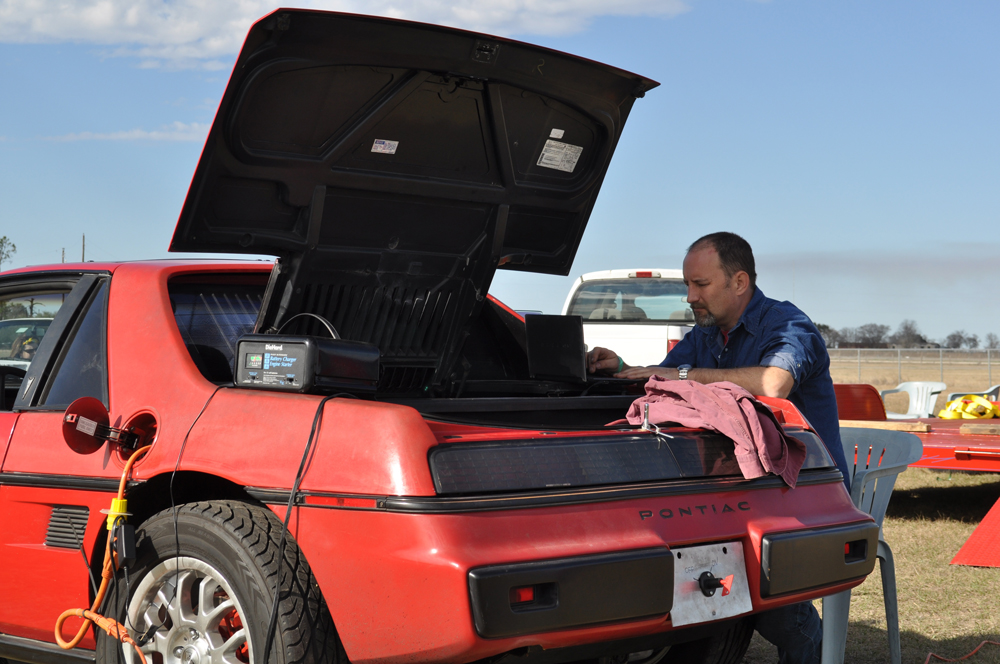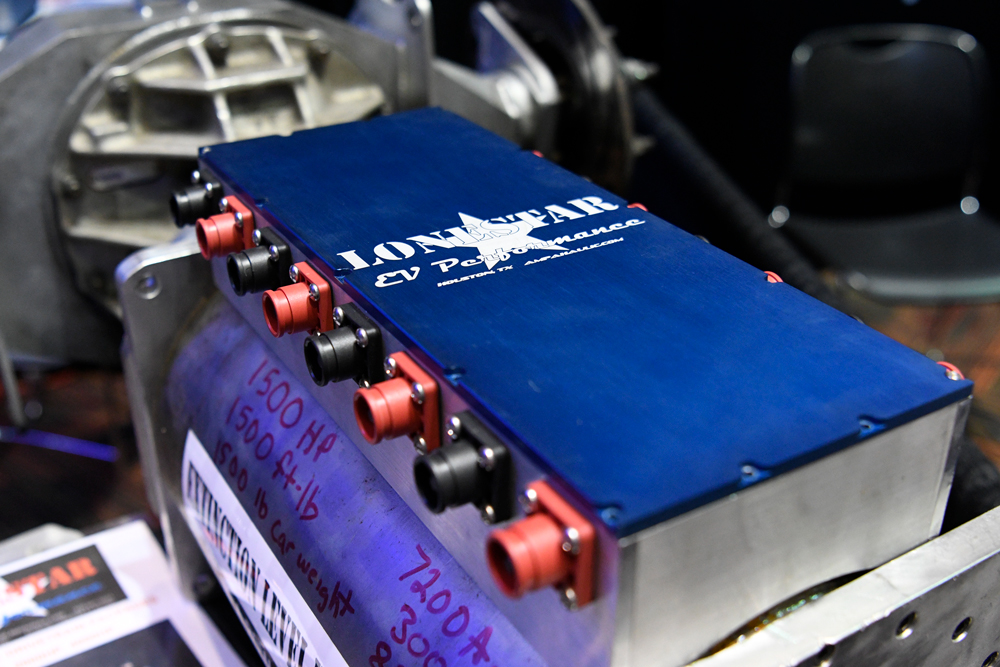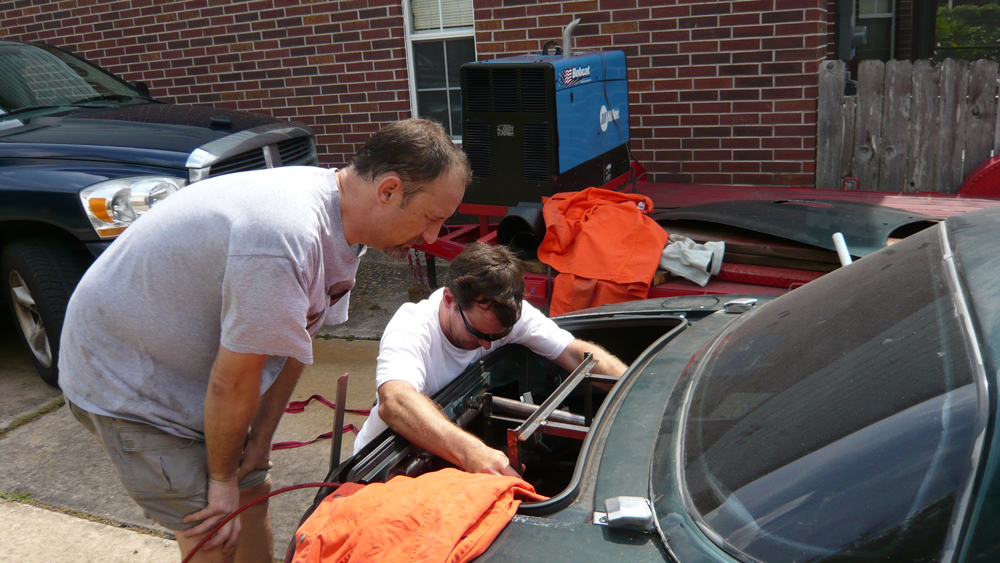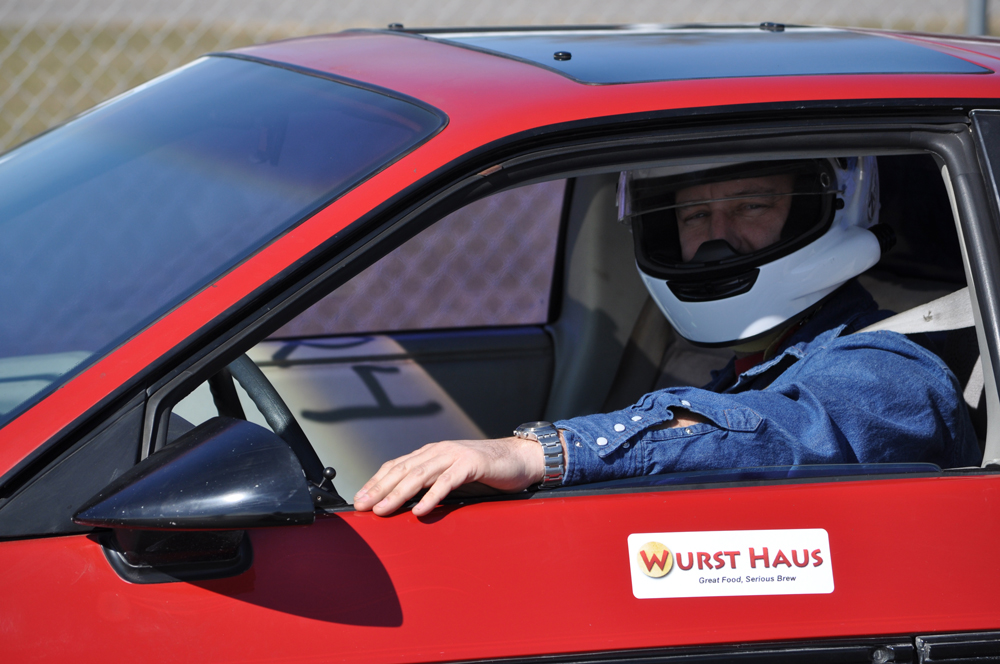Industry Insights: John Metric

As EV drag racing charges to increasing levels of acceptance, this Texas-based metals engineer and pioneer of the movement discusses why this segment is so appealing, as well as the obstacles that still must be overcome before electric drags can enter the mainstream.
John Metric never set out to become one of the leaders of the electric racing movement. The Houston, Texas-based metals engineer used to work on the Northern Alberta oil sands, which is where he first saw a battery-electric drag racing snowmobile. The launch capability of that racer intrigued his engineer’s mind, so Metric decided to apply electric power to a drag racing car.
That quest led him to NEDRA, the National Electric Drag Racing Association. Metric found quick success in electric drags, and eventually he served as president of that organization for 10 years.
To feed his racing projects, Metric founded Lonestar EV Performance in Lake Jackson, Texas, just south of Houston. Lonestar provides specialized lithium-ion batteries for racing and other uses and high-performance EV parts, and he consults on all kinds of racing and general-use electric vehicles.
We caught up with Metric as he was on the road to Wisconsin to pick up some new electric racing motors for a project.

PRI: How did you get involved with electric racing? Was it always an interest, or did you see something that brought you to the game?
Metric: I spent a couple of winters up in Alberta, and there’s not much to do in the winter up there. The only sporting thing they had was snowmobile drag racing. I saw a guy there who had a little starter motor and a couple lead batteries, and he was doing phenomenally well with electric drag racing. I said, “Man, how could that be? That tiny little motor’s outperforming all these 600-horsepower snowmobiles.” So I decided to study it and, sure enough: When electric motors are turned on, they pull a lot of power trying to get up to speed. If they stay in that startup mode, they’re generating hundreds and hundreds of horsepower.
PRI: So the next obvious step was to build an electric drag car?
Metric: I was working on a Lamborghini Diablo kit car in about 2009. I decided to abandon that project and build an electric drag car. I found these guys in NEDRA on the Internet, and the president was a guy named Mike Willmon in Alaska. I followed the Willmon model, using his design. He was in a Ford Pinto, and he was lifting the front wheels off the ground! I couldn’t get over the torque that was available, so the first car I built was a 1984 Pontiac Fiero. I called it DC Plasma, and that car had 1,350 lb.-ft. of torque.
PRI: After more than a decade, where is electric drag racing today?
Metric: NEDRA was founded about 25 years ago, and then over a period of 15 years or so, it created a set of rules, including safety rules, for drag racing. NEDRA lobbied NHRA and IHRA, and about 11 years ago, they adopted the NEDRA rules package for a class called ET bracket racing, electric vehicle, seven and half second and slower, and a motorcycle class as well.
Three years ago, the IHRA allowed ET bracket EVs into its Summit SuperSeries points, competing for track champion. We started to see one or two electric cars entering. Then this last year was the first year that the NHRA publicly said, “Yes, we’re going to allow electrics into the Summit Racing Series.” There were six electric vehicles from different classes in the Summit SuperSeries finals this past year at Memphis.
PRI: If you could go back, is there anything you’d do differently with respect to IHRA and NHRA?
Metric: I think maybe advertise a little more. It was almost like an afterthought there. For example, to enter the Summit SuperSeries, a racer has to win their local track championship. Depending how the points were done for that track, a racer could go out and race one time, and if they got one point, they could be declared the electric track champion. But they had to race against somebody else, not go out and just do a bye-run. That’s against the rules. So people didn’t understand the rules about how to declare an electric track champion.
PRI: What are the unique success factors in electric drag racing? Is it just about a big motor and battery?
Metric: Being competitive means, number one, having very consistent reaction times. So you have got to practice. The other thing is the whole launch off the line. About all you can do is stomp the pedal down. There’s really not a lot of tuning there, but there is battery temperature, and motor temperature, and getting to the line, and knowing what condition your car’s in so that when you do react, you end up with a consistent time.
PRI: What do you think is the biggest obstacle to racers around the country adopting EVs? Not just in drag racing, but sports cars, endurance racing, sprint cars, or whatever.
Metric: I would put [those obstacles] into three categories. One category I discovered when I was supplying parts, motors, and things to different racers, is that people will take on a project, and then the project turns into a three-year operation. As they get into it, there’s a lot of computer programming, and wiring, and data communication, CAN BUS and these different things. They find that they bit off more than they expected, and the project languishes, and then it gets abandoned.
Then there’s another type where they’re dealing with electric batteries at 400 volts, 600 volts, 800 volts, and the person just says, “Man, I didn’t know this, but I don’t like electricity.” So they drop the project for that reason.
Then I’d say there’s a person who comes to a budget issue. They get into a project, and I tell them the basic parts are going to cost five grand for this, and six grand for that, so it’s going to be about 20 grand. But by the time they fully get lined out, the car’s probably 60 grand to convert. So they hit the budget wall, if you will.

PRI: Why do people come to electric racing?
Metric: A lot of people get into it just because it’s unique, and they’re going to be the talk of the town when they bring their electric car to the slalom race, or the track, or whatever they’re going to do. I know a guy doing Late Model circle track. Everybody’s over in his pits just like they’re at mine, leaning over, looking at the car, can’t believe that he’s competitive. “Wow! How’d you do that?” You’re the talk of the town, but you have to get there, and you’ve got to make that commitment and do it. So I say in general, you need resources and commitment, and you have to want to do it at all costs.
PRI: We’re seeing some tracks and facilities starting to say, “Hey, we can’t handle EVs, because we don’t think we can fight a fire, or we don’t know how we can do a driver extraction without exposing our E-crew to getting shocked.” What do you think needs to happen on the facility side to get things up to date and confident?
Metric: That is truly an issue. You never want to tell a safety guy or a first responder that, “Oh, no, no, no. It’s safe.” It has to be respected. To earn that respect you have to work around it and have a practice fire incident to get some experience. And there are very, very few people with actual electric car crash experience. There’s no network of people who can do classroom training and say, “Well, listen. I fought three of these fires, at different venues, and this is how we did it, so please feel safe getting the driver out. And this is how you potentially fight a fire, or extract the battery from the car,” or something like that. There’s just not a big enough network of people.
PRI: Another issue that a lot of tracks are going to have is charging capacity. Many tracks are out in the country, and they may not have enough grid power coming to the facility. How are you seeing tracks addressing charging capability?
Metric: I study this pretty intensely. My car does a, say, seven-second quarter mile, and I consume about one-and-a-half-kilowatt hours in a run. That doesn’t sound like very much, but it’s a huge amount of power. That’s more than a thousand horsepower, like a megawatt of power for four, five, six seconds. However, one kilowatt hour can be recharged on an RV power outlet in about 15 minutes. Imagine a Tesla-type car, with an 80-kilowatt-hour battery. Say it consumes a kilowatt hour of power per run. If he starts full, he has 80 runs in his car.
Now, going around a circle track or road course is a different animal. That will be a big consideration, I would guess. I think EV endurance racing could be a big deal. I was just having a conversation last night about having some quick pop-in, pop-out batteries. Boom, you’re recharged, ready to go. But that battery has to be recharged, too. If you’re out there consuming it at, say, 300 kilowatts, you better have a recharge rate that’s equivalent to your consumption rate, or you’ll have to carry enough spare batteries, all pre-charged, to meet the goal of the run. For a 24-hour kind of race, I don’t know that anybody has enough spare batteries to do that. So if you’re out there going around the track at 300-kilowatts, your net charge rate still has to be 300-kilowatts to keep even, times how many cars that are going around the track, I can’t do the math that quick, but it’s a huge power source.

PRI: Getting back to drag racing, the first electric dragster to hit 200 miles per hour happened in 2020. Do people have another goal above 200 now in mind for EV drag racing?
Metric: Oh yeah. I’m right there. I’m planning to do that right now with my car. I’ve got a motor, and I’m actually driving right now to pick it up in Wisconsin. It’s a 2,000-horsepower motor. We’re shooting for 250 mph. But miles per hour is one thing, and ET is another. My car’s still quicker than that 200-mile-per-hour car, so I crossed the line several car lengths ahead of him. I’m not trying take anything away from him! He did a great job, and he has some Lonestar batteries in that car.
But when the 200-mile-an-hour quest came along, that took a lot of attention away from the ET race. I’m building a Ford GT40 that’ll be powered by these new 2,000-horsepower motors, and we’re shooting for 300 miles an hour in the Texas Mile. It’s a standing mile speed test. Standing start and you got one mile. What’s the highest speed you get to?
PRI: Formula E has had a lot of support in open wheel racing. Do you have any thoughts about how that series is going and the future of EVs in open wheel pro racing?
Metric: I have much less comment about that. I haven’t circled into that, mainly because the way they’re doing it is there’s only one manufacturer for the various components, and they preselect that ahead of time. There’s no open competition for car development.

PRI: PRI is committed to getting younger people involved in racing. What do you think EVs can do to engage the next generation in racing?
Metric: I sell a lot of JEGS Junior battery packs and other electric junior dragster battery packs out of Lonestar EV Performance. Everybody who gets one of these junior cars absolutely loves it. They can roll it off the trailer, do a little bit of checking the wind direction and that kind of thing, recharge it, watch the battery cells to make sure that everything’s healthy, and go racing. They’re very competitive.
We’re selling more and more each year. In electric there’s a little less tuning involved, and it makes the sport a little more competitive. It’s much more about the driver, and the reaction time, and setting up the car. So I’ve had a really good experience with the younger generation and Electric Juniors.
PRI: As a guy whose business is in EV racing, providing the parts and the expertise, what do you think that traditional motorsports businesses are not understanding about EV performance and the developing opportunities that are available to them?
Metric: I walk up and down the aisles of the PRI Show, and there are so many parts there that are all related to the internal combustion engine. And the internal combustion engine has had a great run. But now the quickest stock vehicle is a Tesla, except for maybe the Dodge Demon. But a four-door sedan is now quicker than 99% of all gas cars out there. I think that’s maybe what they’re missing. Tesla doesn’t do any racing program. It’s just silently—pun intended—sneaking up on the internal combustion engine here and just putting them to sleep.
Open up an engine bay, and there’s a blower or a turbo, and all the belts, and the pistons, and all these things. There’s 1,000 moving parts in an internal combustion engine. The electric motor I’m going to pick up right now has one rotor, two bearings, and that’s it. Nothing else moves.
I have been attending the PRI Trade Show for eight years, and we were out there waving the flag saying, “Hey, electrics are fast.” People would walk by and sneer, and they would say things like, “Ugh, electrics. They will never take off.” Each year, there’s a little bit less of that. Now, they just look over and say, “Yeah, they’re pretty fast.” We’re making progress.
 MEMBERSHIP LOGIN
MEMBERSHIP LOGIN JOIN PRI
JOIN PRI


